We've noticed that you're using an out of date browser. We recommend that you update to the latest version to enhance your browsing experience.

Availability Search for Hunterian Museum
Terms & conditions.
This booking system and any information appearing on this page relating to the availability of any accommodation is provided by third parties and not by VisitScotland. It is intended to provide real time availability information relating to accommodation which is also provided by third parties. You may use this booking system to place direct bookings with third party accommodation providers. Any booking you make will not be placed with VisitScotland and we will have no liability to you in respect of any booking. If you proceed to make a booking you will leave our Website and visit a website owned and operated by a third party. VisitScotland does not have any control over the content or availability of any external website. This booking system and any information appearing on this page is provided for your information and convenience only and is not intended to be an endorsement by VisitScotland of the content of such linked websites, the quality of any accommodation listed, or of the services of any third party.
Hunterian Museum
The Hunterian is Scotland's oldest public museum and is home to one of the largest collections outside of the National Museums.
Founded in 1807, The Hunterian is one of the leading university museums in the UK and is one of Scotland’s most important cultural assets.
Built on Dr William Hunter’s founding bequest, The Hunterian collections include scientific instruments used by James Watt, Joseph Lister and Lord Kelvin.
There are Roman artifacts from the Antonine Wall, major natural and life sciences holdings, Hunter’s own extensive anatomical teaching collection and impressive ethnographic objects from Captain Cook’s Pacific voyages, as well as a major art collection.
The Hunterian is also home to the world’s largest permanent display of the work of James McNeill Whistler and the largest single holding of the work of Charles Rennie Mackintosh. The Mackintosh House has the reassembled interiors from his Glasgow home.
Accessibility
- Access guide
- Baby Changing Facilities
- Public Toilet Facilities
Payment Methods
- Credit Card
Related items of interest
- The Mackintosh House
- Hunterian Art Gallery
The content of many of our web listings is provided by third party operators and not VisitScotland. VisitScotland accepts no responsibility for (1) any error or misrepresentation contained in third party listings, and (2) the contents of any external links within web listings ((1) and (2) together hereinafter referred to as the "Content"). VisitScotland excludes all liability for loss or damage caused by any reliance placed on the Content. The Content is provided for your information only and is not endorsed by VisitScotland.
What's Nearby
Accommodation, attractions, food & drink, terms and conditions.

The Hunterian Museum Visitor Guide
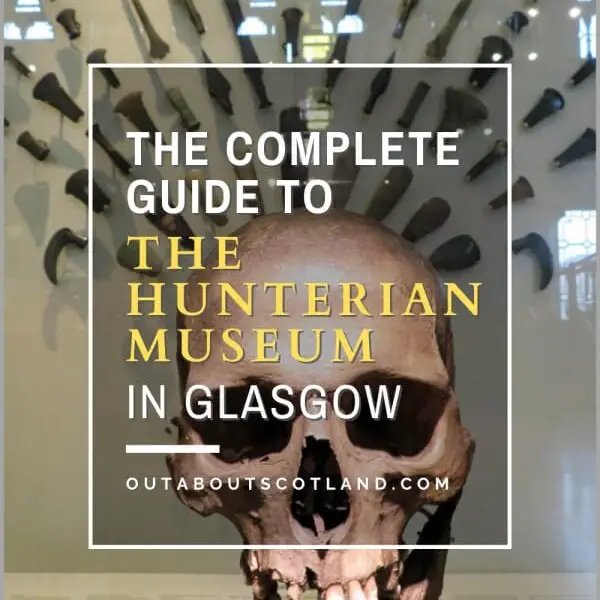
The Hunterian Museum, located at the University of Glasgow, features a collection of exhibits from the fields of zoology, geology, archaeology, and more. The museum is a popular free attraction that’s often overlooked by visiting tourists as it’s hidden away within the city’s university complex in the West End .
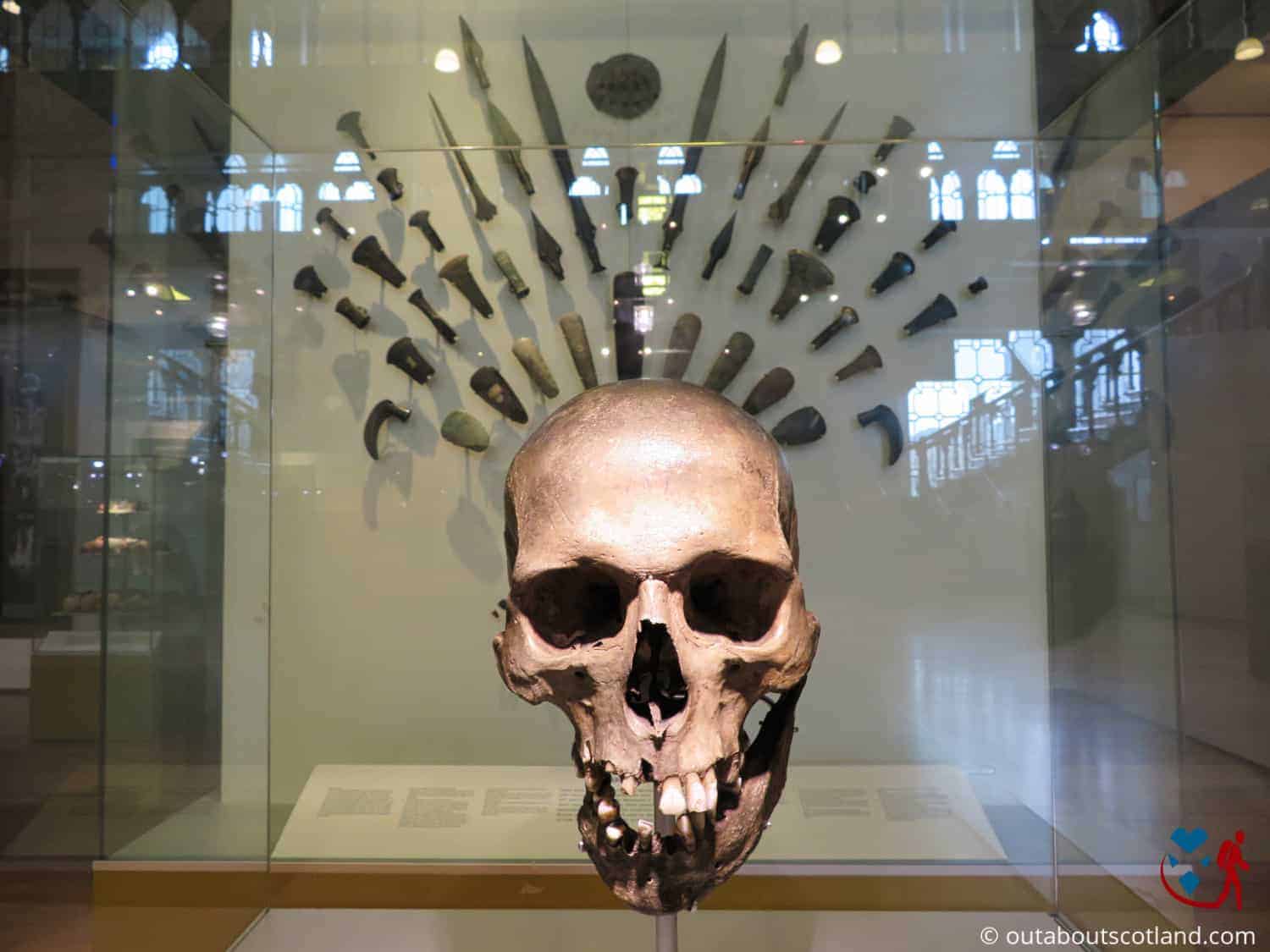
Hidden away amongst the Gothic architecture of the University of Glasgow’s stunning Gilbert Scott Building lies the Hunterian Museum.
You’ll find the museum on the university’s main campus, which is easy to get to if you take the number 4 bus from the city centre or walk the 10-minute route from the Hillhead SPT subway station. As with most of the attractions in Glasgow, you’ll be directed there thanks to the numerous street signs pointing to the university, and once at the Gilbert Scott Building, you’ll find each on-site attraction clearly marked.
To get to the museum, go through either of the main entrances that open up into the courtyards and head towards the dramatic domed arches under the Business School (also known as The Cloisters). There’s a door at one end with stairs leading up to the museum, but if you need wheelchair access, you should head to the university gift shop, where you’ll find a lift to the museum entrance.
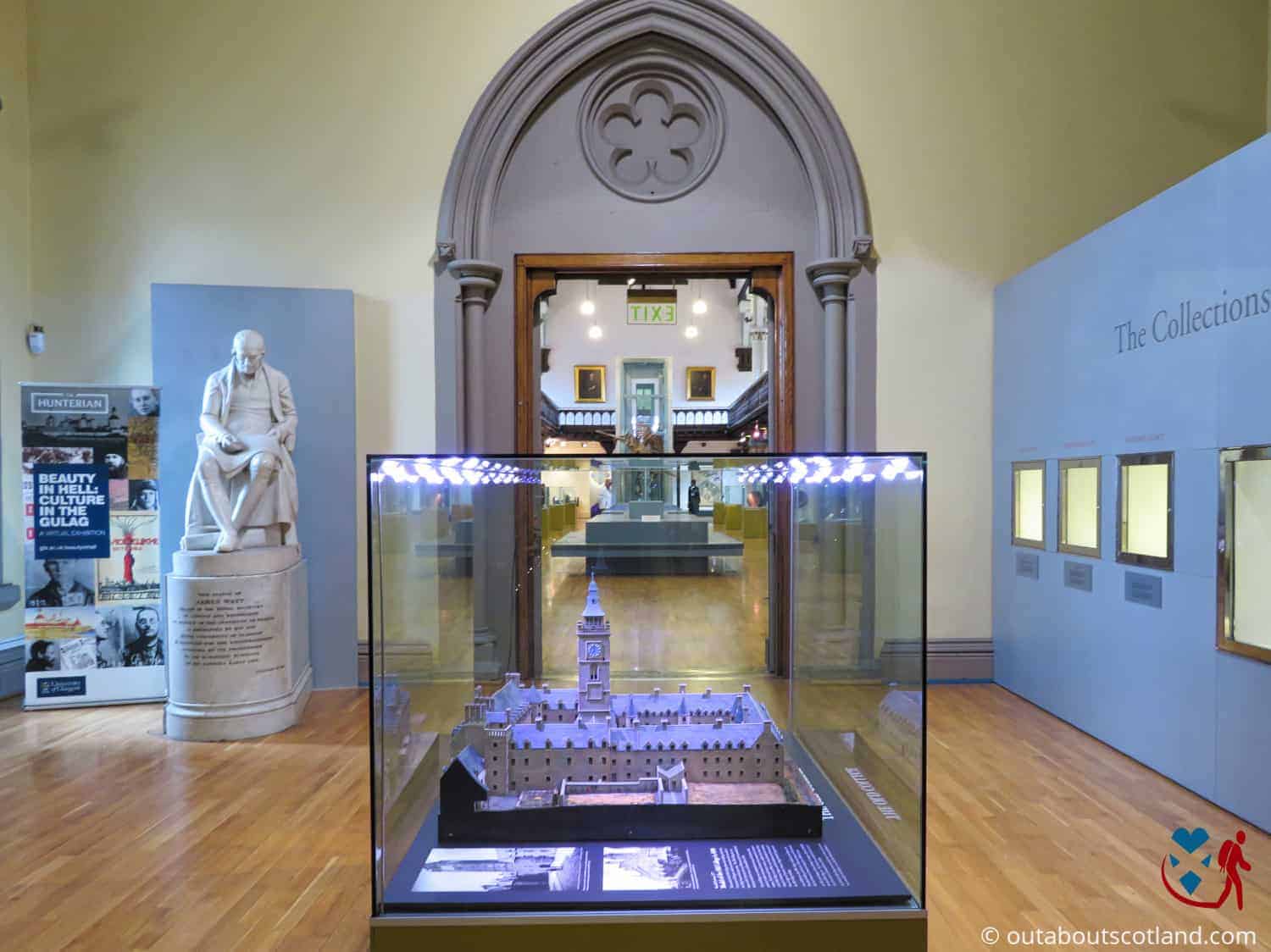
The Hunterian Museum is a place that I found to be full of surprises, the first being that it’s actually the oldest museum in Scotland. The museum opened in 1807 after anatomist William Hunter died and donated his substantial collections to the University of Glasgow. While most of the original exhibits are still on display, you’ll find lots of other artefacts that have been added to the collection over the years.
There are so many rare and historically significant artefacts inside the museum that you’ll be kept occupied for a good hour or two, and walking around the main hall and upper balcony will take you on a journey through Roman history, dinosaurs, evolution, minerals, medicine, and many other subjects.
Each display cabinet and case contains just the right amount of objects to be interesting but not overwhelming (which I suppose is to be expected after having more than 200 years to perfect them), and there are interesting information panels attached to each display.
The main hall, in particular, is an incredible place, not just for the artefacts but because the building is almost cathedral-like inside. Look up, and you’ll see carved wooden balconies, decorated stone columns, and lead-lined windows. The building certainly does justice to the artefacts on show, which, incredibly, only comprise 2% of the entire collection.
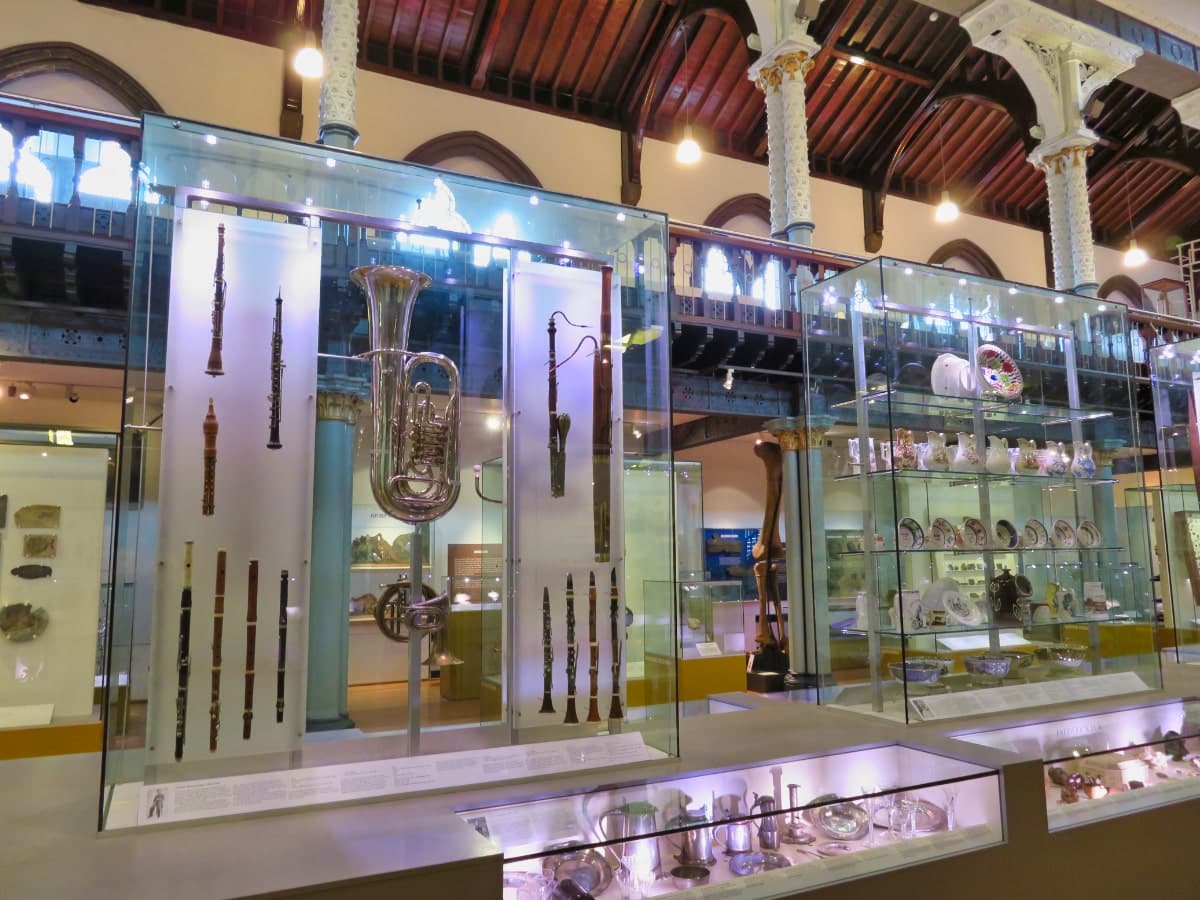
The Highlights
1: The Hunterian is home to a vast and varied collection of exhibits, ranging from scientific instruments and natural history specimens to Roman artefacts and fine art. The museum showcases the extensive collection of Dr. William Hunter, its founder, which includes coins, minerals, and works by renowned artists such as the Scottish Colourists.
2: The Hunterian boasts a significant collection of Roman objects from the Antonine Wall, which was the northwestern frontier of the Roman Empire that ran across what is now central Scotland. This collection provides an in-depth look at Roman Britain’s history and the empire’s reach.
3: Adjacent to the main Hunterian Museum building is the Mackintosh House, a meticulous showcase of the interiors from the Glasgow home of the architect Charles Rennie Mackintosh and his artist wife, Margaret Macdonald Mackintosh. The house provides an insight into their personal life and features a series of beautifully furnished rooms, preserved and displayed as they were when the Mackintoshes lived there.
Visiting Tips
1: To enhance your understanding and appreciation of the collections, consider joining a guided tour. The museum occasionally offers tours with knowledgeable guides who can provide in-depth information about the exhibits.
2: The Hunterian’s collections are extensive, and you may find more to see than you initially expected. Ensure you allocate enough time not only for the main museum but also for the Mackintosh House and the Art Gallery if they’re on your sightseeing agenda.
3: The best way to get to the Hunterian Museum is to take the 4 or 4A bus from the city centre or take the subway and walk from Hillhead subway station.
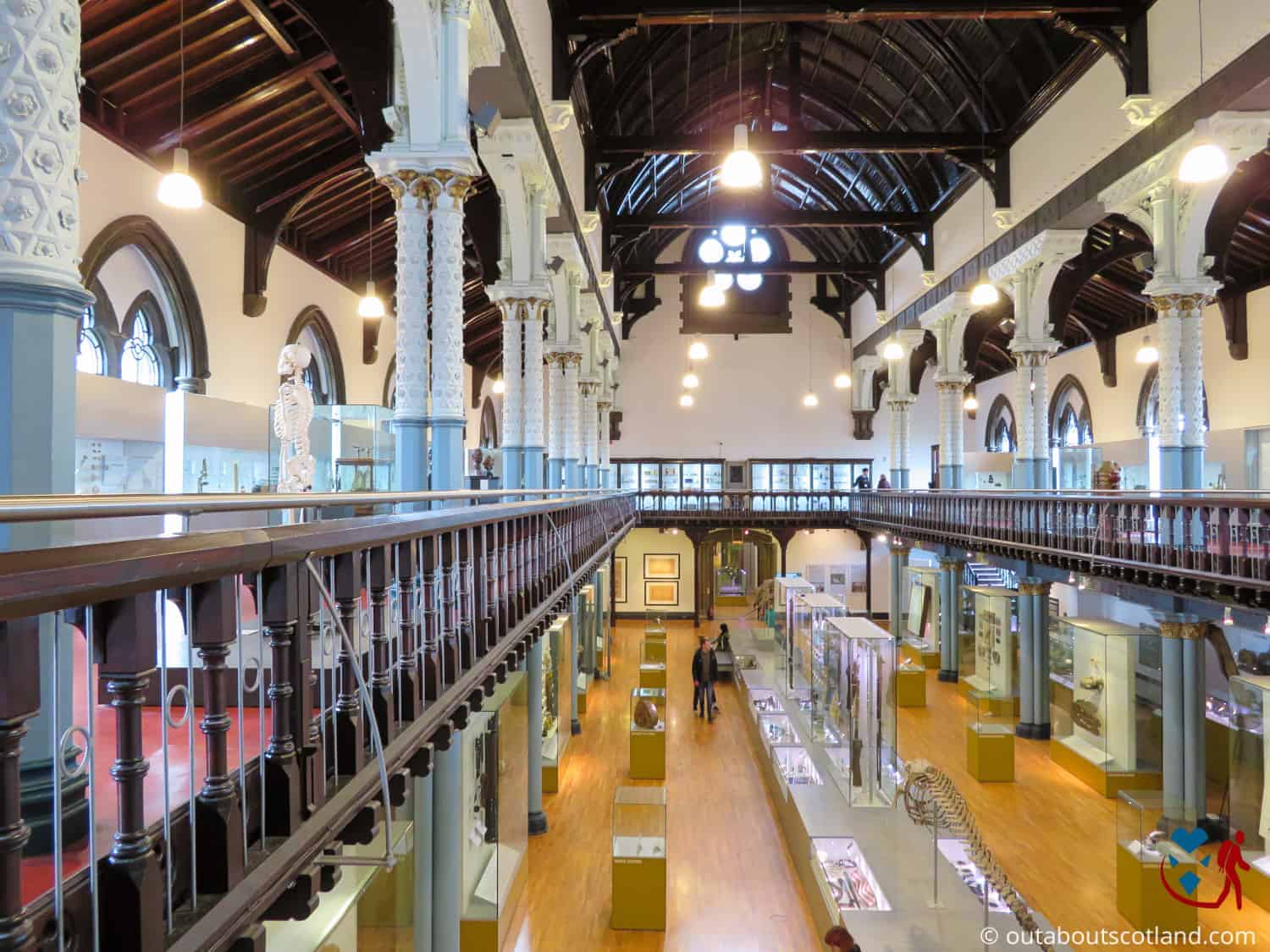
Tourist Information
As with most attractions in Glasgow, the Hunterian is completely free to visit. It’s also close to other attractions, so it’s easy to combine it with places like Kelvingrove Park and the Kelvingrove Art Gallery and Museum. Both sites are only a 5-minute walk away, but the Kelvingrove Museum is so big that I recommend spending a separate day there. If you don’t have time to include a trip to Kelvingrove with your visit to The Hunterian, you might consider viewing the university’s other museums, as they’re all located within a short walk of each other.
You’ll find the Hunterian Art Gallery across the other side of University Avenue, next to the university library and the domed McMillan Round Reading Room. Joined onto the art gallery is the Mackintosh House , the former home of famed Glaswegian architect Charles Rennie Mackintosh, while the Hunterian Zoology Museum lies a short distance away on the opposite side of the avenue.
Heading back into the Gilbert Scott Building, you’ll find the university chapel along with a very good university gift shop, and there are several places to eat that are open to visitors throughout the campus. And of course, there’s the museum, located above the gift shop and split into three main sections.
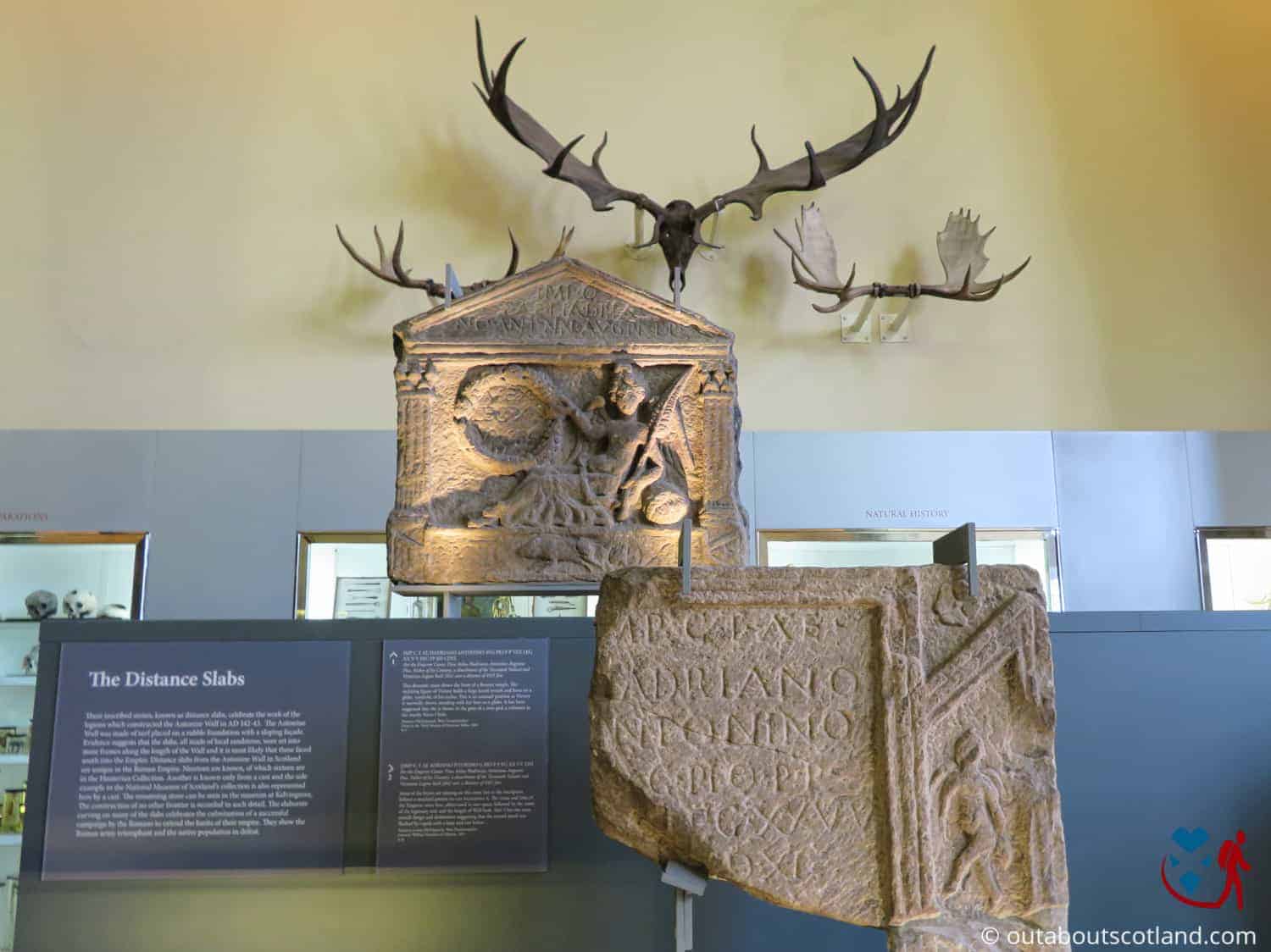
The first of these, the entrance hall, contains sections of stonework from the Antonine Wall which was the final frontier of Roman rule in Great Britain over two thousand years ago. The carvings on these stone blocks are remarkably well preserved and there are information panels dotted around the hall that describe the story behind each piece.
Next door contains the largest section of the museum in the main hall and the upper balcony, where the bulk of the exhibits are displayed in an eclectic collection of glass cases. Walking around, you’ll see dinosaur bones, gems and minerals, zoology exhibits, ancient human tools, and examples of archaeology from across the globe, while the upper balcony contains a science showcase and displays of Glasgow’s links to modern medicine.
One word of warning here. The medical section has a few displays that show human anatomy either in pickled jars or in fairly realistic models, so if you’re a bit squeamish or have young children with you, you might want to give that part of the museum a miss, but otherwise, it’s a fascinating display.
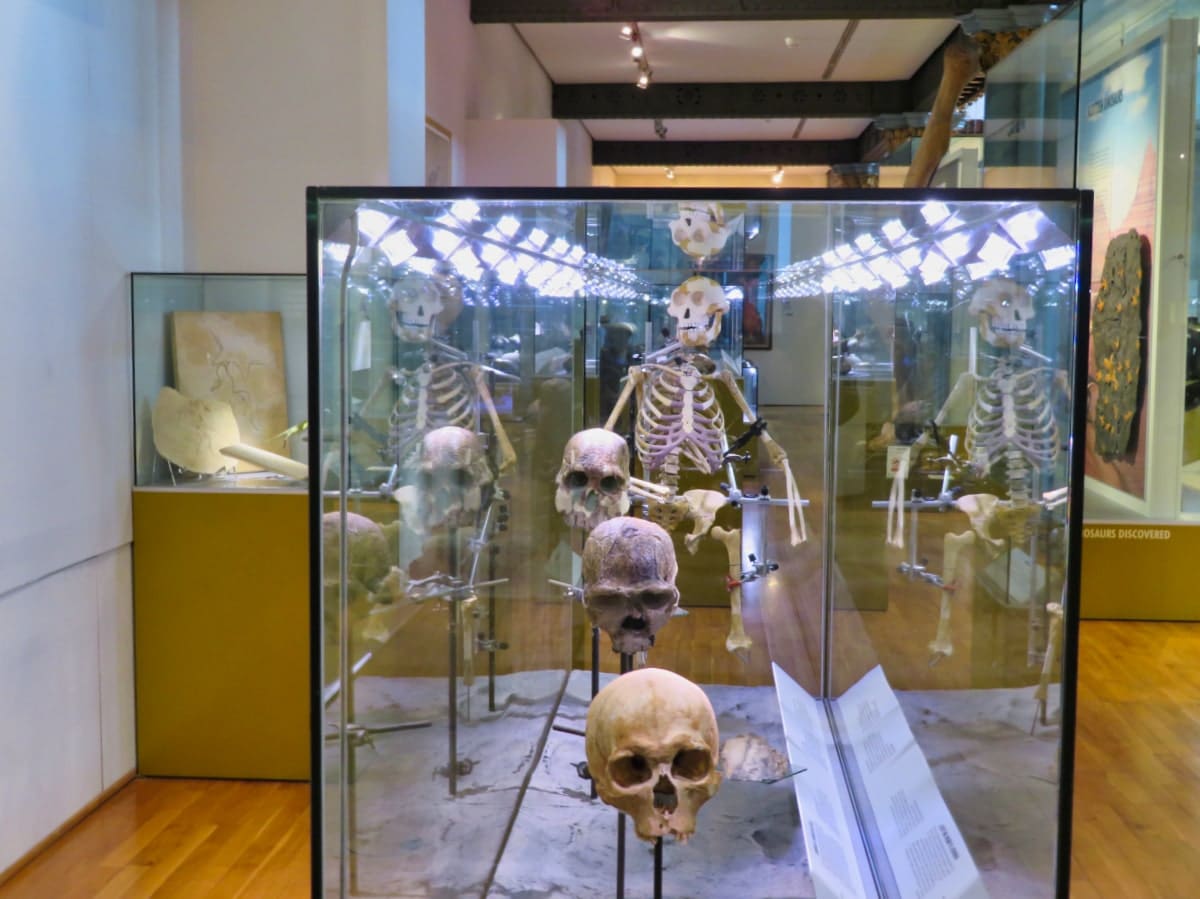
Things to Do
Discover Ancient Civilizations : The Hunterian boasts a fascinating collection of artefacts from ancient Rome to the Victorian era. Immerse yourself in history and admire well-preserved sculptures, ceramics, and jewellery from across the ages.
Lord Kelvin : The Hunterian’s permanent collections feature a display that centres around William Thomson (AKA Lord Kelvin), Glasgow’s greatest scientist. Thomson developed the tidal gauge, discovered how to lay transatlantic cables, and invented a type of compass that was used all over the world.
Medical Collections : The Hunterian’s William Hunter exhibition tells the story of the founder of the museum who was a royal physician and one of the world’s leading pioneers in anatomy and surgery.
Coins : See one of the world’s finest collections of coins and medals which is the result of hundreds of years of global trade courtesy of Glasgow’s world-leading shipping industry.
Visit the Mackintosh House : Near the Hunterian Museum is the Mackintosh House, a meticulous re-creation of the famed Scottish architect Charles Rennie Mackintosh’s home. This is a must-visit for any architecture or design enthusiast, offering an intimate look at Mackintosh’s innovative approach to domestic design and decoration.
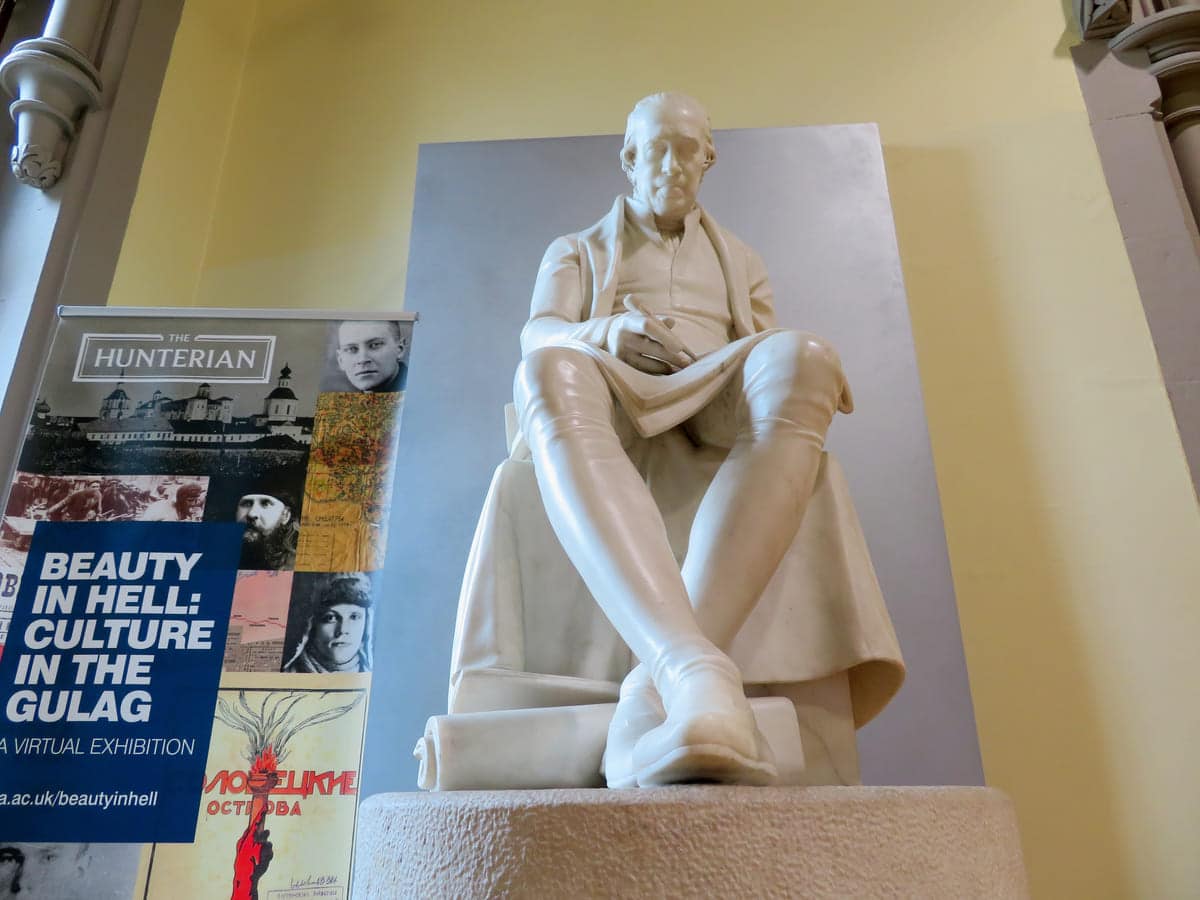
Things to Do Nearby
Kelvingrove Park . 6 Professors’ Square, Glasgow G3 6BY. 8-minute walk. One of the oldest public parks in Scotland. Kelvingrove Park features a collection of memorials, walking paths, sports areas, the River Kelvin and the Kelvingrove Museum.
Kelvingrove Art Gallery and Museum . Argyle St, Glasgow G3 8AG. 9-minute walk. One of Scotland’s most-visited museums, Kelvingrove offers a diverse range of exhibits from across the globe. The museum is situated near the west end of the 84-acre Kelvingrove Park. Entry is free.
Glasgow Botanic Gardens . 730 Great Western Rd, Glasgow G12 0UE. 12-minute walk. This is a 27-acre botanic garden in the heart of Glasgow. The gardens are acclaimed for the Victorian cast-iron glasshouse, Kibble Palace. Entry is free.
The Riverside Museum of Transport . 100 Pointhouse Rd, Govan, Glasgow G3 8RS. 21-minute walk. A modern museum that explores the history of transport with interactive displays and one of the largest collections of rare cars, trains and motorbikes in Scotland. Entry is free.
The Tall Ship . 150 Pointhouse Rd, Stobcross Rd, Govan, Glasgow G3 8RS. 24-minute walk. This attraction is located next to the Transport Museum on the bank of the River Clyde. The Tall Ship is a fully restored Victorian sailing ship that allows visitors to explore the historic vessel from bow to stern. There is a café and gift shop inside. Entry is free.
Frequently Asked Questions
What is the history of the hunterian museum.
The Hunterian Museum is the oldest public museum in Scotland. It was established in 1807, following the bequest of Dr. William Hunter, a Scottish anatomist and physician.
Dr. Hunter left his substantial and varied collections to the University of Glasgow. The collections include scientific instruments used by James Watt, Joseph Lister, and Lord Kelvin, extensive art collections, ethnographic items, coins, historical documents, and zoological specimens.
Sir George Gilbert Scott created the main building for the University of Glasgow, which houses the museum. Over the years, the museum has expanded and now includes the Hunterian Art Gallery, the Mackintosh House, the Zoology Museum, and the Anatomy Museum.
Is the Hunterian Museum free?
There is no fee to visit the Hunterian Museum, but there is an admission charge for some temporary exhibitions.
What is in the Hunterian Museum?
The Hunterian Museum houses collections of artefacts that include Roman Scotland, geology, Ancient Egypt, scientific instruments, medicine, coins and medals, and zoology.
Who is the Hunterian Museum named after?
The Hunterian Museum in Glasgow is named after Dr. William Hunter, a Scottish anatomist and physician. He was a significant collector of paintings, coins, books, manuscripts, and interesting biological and geological specimens.
Related Posts

The Best Things to Do in Glasgow With Children
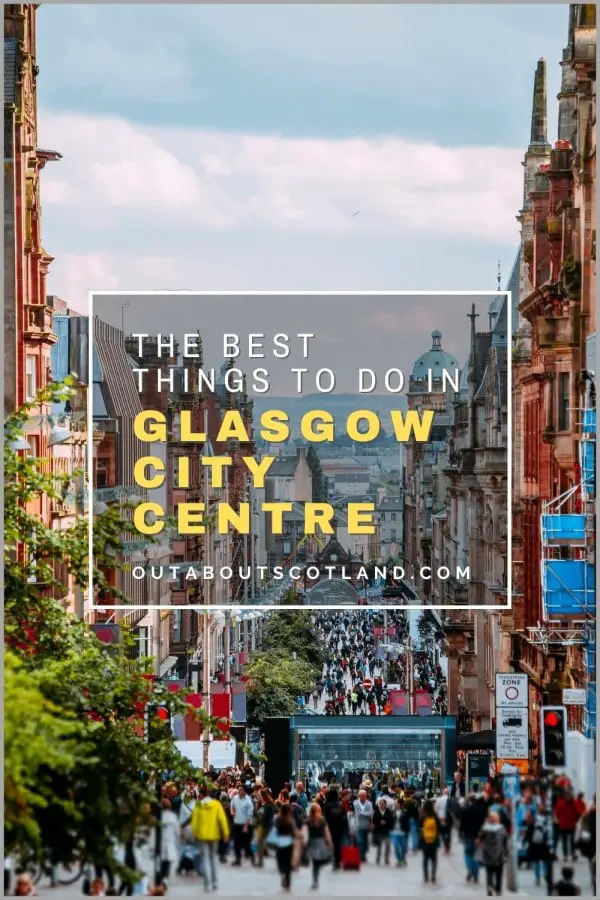
The Best Things to Do in Glasgow City Centre
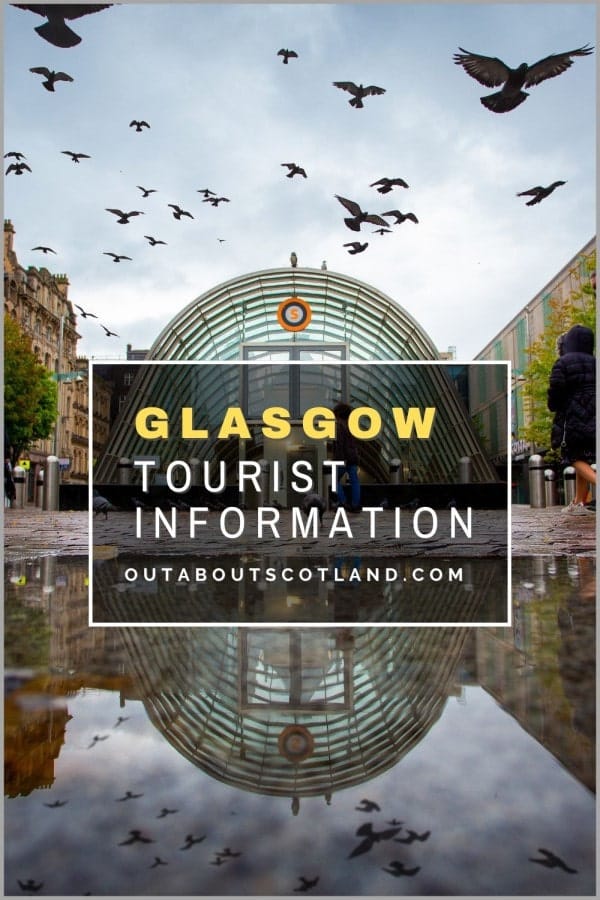
Tourist Advice for Visitors to Glasgow

Pollok Country Park Visitor Guide
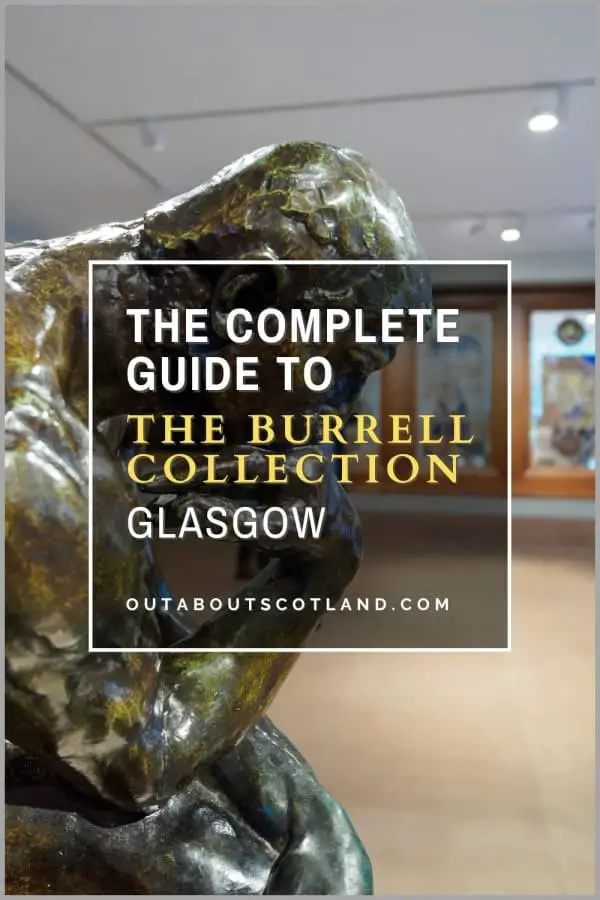
The Burrell Collection Visitor Guide
Craig Neil is the author, photographer, admin, and pretty much everything else behind Out About Scotland. He lives near Edinburgh and spends his free time exploring Scotland and writing about his experiences. Follow him on Pinterest , Facebook , and YouTube .
Hunterian Museum
Housed in the glorious sandstone university building, which is in itself reason enough to pay a visit, this quirky museum contains the collection of renowned one-time student William Hunter (1718–83). Hunter was primarily an anatomist and physician, but as one of those wonderfully well-rounded Enlightenment figures, he interested himself in everything the world had to offer.
Pickled organs in glass jars take their place alongside geological phenomena, potsherds gleaned from ancient brochs, dinosaur skeletons and a creepy case of deformed animals. The main halls of the exhibition, with their high vaulted roofs, are magnificent in themselves. Highlights include a display of artefacts from the Antonine Wall and the beautiful 1674 Chinese Map of the Whole World produced for the emperor by a Jesuit at the court.
This collection will perhaps become part of the new museum at Kelvin Hall but probably not until at least 2023.
University Ave
Get In Touch
0141-330 4221
https://www.hunterian.gla.ac.uk/
Lonely Planet's must-see attractions

Glasgow Cathedral
Glasgow Cathedral has a rare timelessness. The dark, imposing interior conjures up medieval might and can send a shiver down the spine. It's a shining…
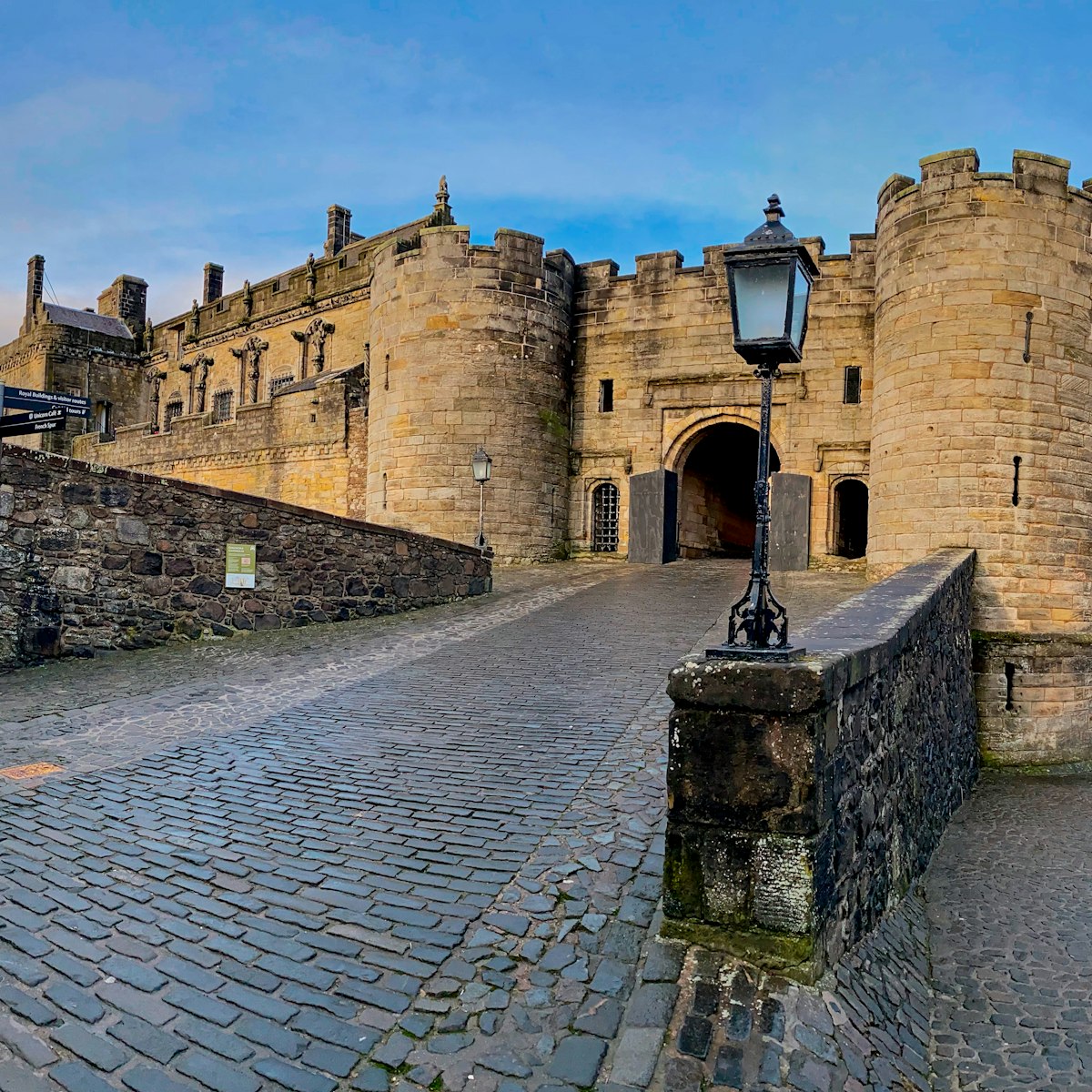
Stirling Castle
21.87 MILES
Hold Stirling and you control Scotland. This maxim has ensured that a fortress of some kind has existed here since prehistoric times. You cannot help…

Riverside Museum
This visually impressive modern museum at Glasgow Harbour owes its striking curved forms to late British-Iraqi architect Zaha Hadid. A transport museum…

Mackintosh House
Attached to the Hunterian Art Gallery, this is a reconstruction of the first home that Charles Rennie Mackintosh bought with his wife, noted designer…

Kelvingrove Art Gallery & Museum
A magnificent sandstone building, this grand Victorian cathedral of culture is a fascinating and unusual museum, with a bewildering variety of exhibits…

Paisley Abbey
Paisley Abbey is well worth the short trip from Glasgow. This majestic Gothic building was founded in 1163 by Walter Fitzalan, first high steward of…

Falkirk Wheel
19.51 MILES
Completed in 2002, the Falkirk Wheel is a modern engineering marvel, a rotating boat lift that raises vessels 115ft from the Forth & Clyde Canal to the…
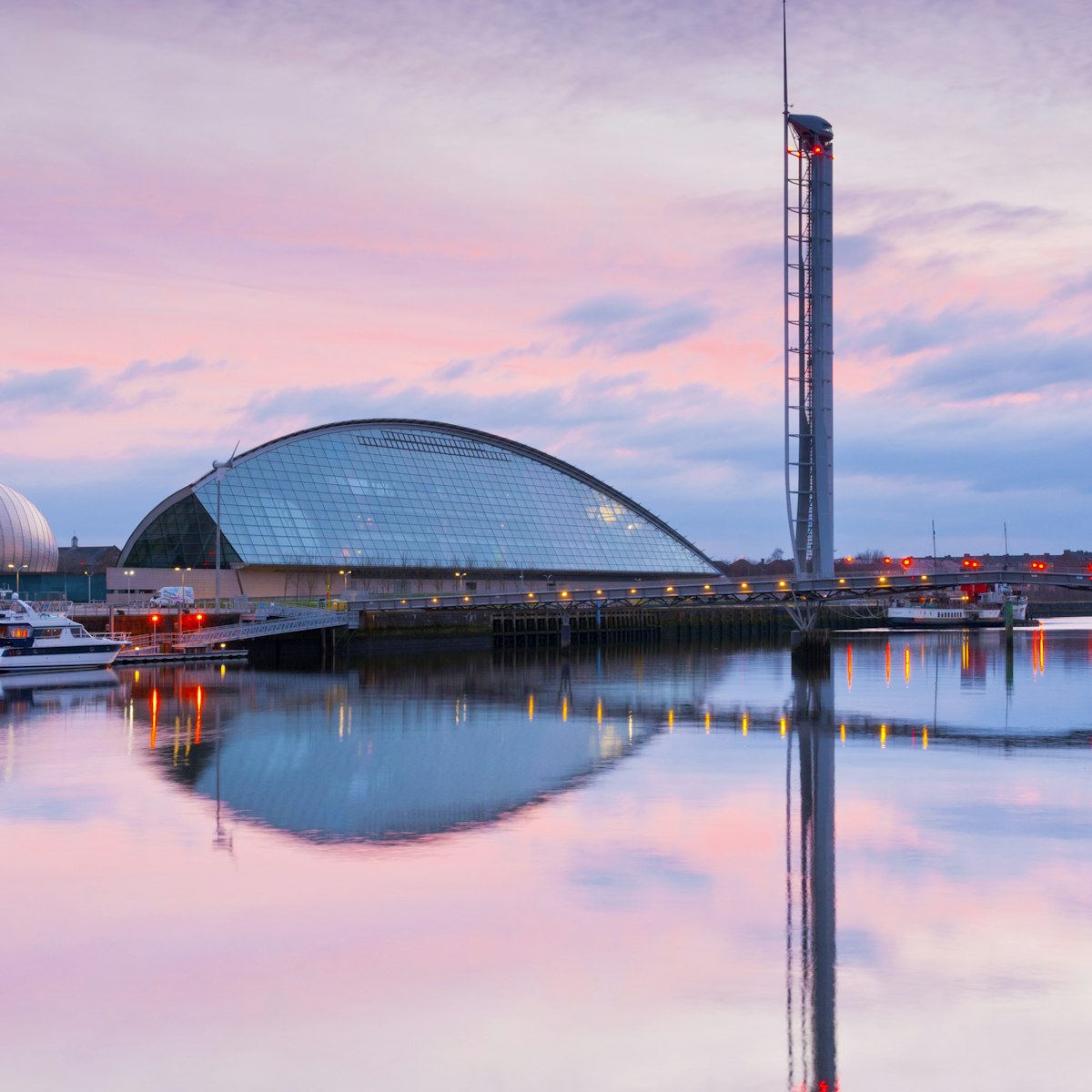
Glasgow Science Centre
This brilliant science museum will keep the kids entertained for hours (that's middle-aged kids, too!). It brings science and technology alive through…
Nearby Glasgow attractions
1 . University of Glasgow
Though founded in 1451, the city's first university has only been located here in the West End since the 1870s. Its imposing sandstone neo-Gothic main…
2 . Mackintosh House
3 . Hunterian Art Gallery
Across the road from the Hunterian Museum, and part of the same bequest, this art gallery incorporates Mackintosh House as well as a good selection of…
4 . Kelvingrove Park
On both banks of the meandering River Kelvin, a tributary of the Clyde, this West End park is popular with dog walkers, foot commuters and canoodling…
5 . Kelvingrove Art Gallery & Museum
6 . Kelvin Hall
Opened in the 1920s as an exhibition centre, this enormous sandstone palace, renovated and reopened in 2016, is a mixed leisure-and-arts space. In…
7 . National Library of Scotland
In Kelvin Hall, this outpost of Edinburgh's National Library of Scotland hosts a small exhibition and a digital archive of maps and audiovisual material…
8 . Botanic Gardens
A marvellous thing about walking in here is the way the noise of Great Western Rd suddenly recedes into the background. The wooded gardens follow the…
- Skip to main content
We use cookies
Necessary cookies.
Necessary cookies enable core functionality. The website cannot function properly without these cookies, and can only be disabled by changing your browser preferences.
Analytics cookies
Analytical cookies help us improve our website. We use Google Analytics. All data is anonymised.
Clarity helps us to understand our users’ behaviour by visually representing their clicks, taps and scrolling. All data is anonymised.
Privacy policy
The Hunterian
Collections.
- Accessibility
The oldest public museum in Scotland, with collections spanning arts, sciences and humanities, The Hunterian is at the forefront of university museums around the world.

The Hunterian, Glasgow’s Oldest Museum
October 10, 2018 by aelyth savage.
Glasgow brims with Scottish culture and is justly renowned for its multidisciplinary appeal, from art and artifacts to music and museums. Spend a day or three digging into this rich heritage and you’ll only scratch the surface, whether you’re visiting the Burrell Collection in Pollack Park or jamming at King Tut’s Wah Wah Hut. Glasgow is Scotland’s largest city and it sprawls more than Edinburgh , so it helps to have a plan of attack and a tidy batch of must-visit selections before arrival. Here’s one to add to that list: The Hunterian Museum .
The Hunterian Museum is named after the Scottish physician William Hunter and housed in the University of Glasgow’s main quadrangle, a beautiful neo-Gothic building designed by Sir George Gilbert Scott, in the city’s glorious West End. The museum opened in 1807, so, like it says on the tin, this is the oldest museum in Glasgow, which I consider to be a mark of utmost distinction given Glasgow’s cultural riches.
You kind of have to wander around the quadrangle’s halls to find the museum, and it reminded me of being in college. I passed a couple taking glamour shots among the arches and pillars and then a room full of students quietly taking a test. I then came to a mustard-yellow wall declaring I’d reached the Hunterian Museum!
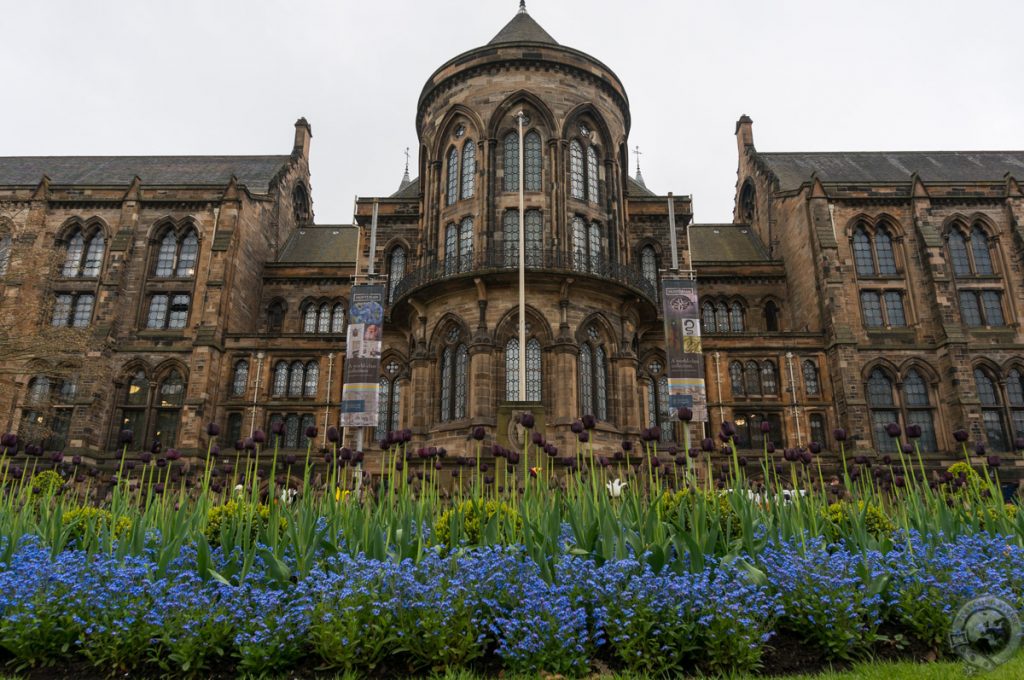
William Hunter professed to be a surgeon and anatomist, but he was also a collector of all things exotic and weird from the height of Colonialism. “New worlds” were being found every decade as courageous sea captains sailed ever farther from Britain’s shores in search of treasure, land, and resources.
Entering the museum I was face-to-face with the permanent exhibit on the Romans in Scotland, which during my visit was a fascinating collection of stones from the Antonine Wall. To my left stood a wing dedicated to William Hunter himself, with a range of odd items like his death mask and an overview of his life and times.
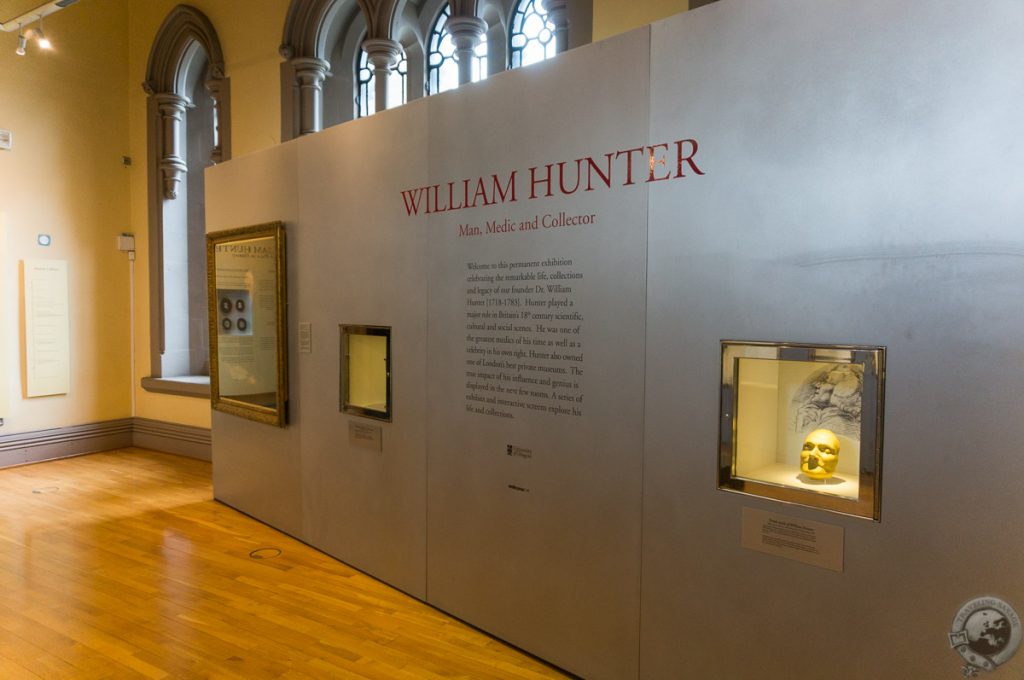
Rome’s Final Frontier was perfect for me as I love the late Iron Age and its transition into the European Dark Ages. Pillars, headstones, and imperial records etched in stone ringed a central pocket in the great, domed entryway of the museum. It’s fascinating perusing the ancient sculptures and browsing the mundane items of soldiers so very far from home. Can you imagine being at the edge of the empire, fighting an unknown enemy, many months from home and loved ones?
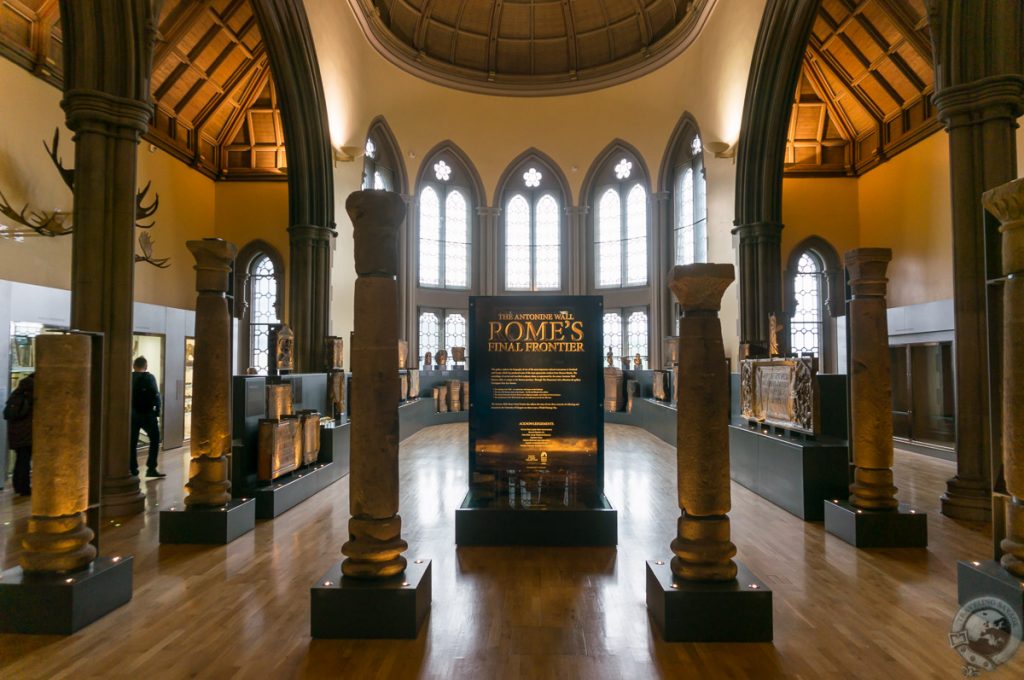
The wing to the right of the entryway opens into a beautiful two-floor museum of archetypal beauty. Here I found everything from stones and neolithic axe heads to an entire plesiosaur skeleton. This permanent section of the museum covers all eras with a natural history bent sure to appeal to a huge swath of tastes. Upstairs I found more recent antiques from the 18th and 19th centuries, much of it related to the development of medicine and surgery as you might expect from a surgeon.
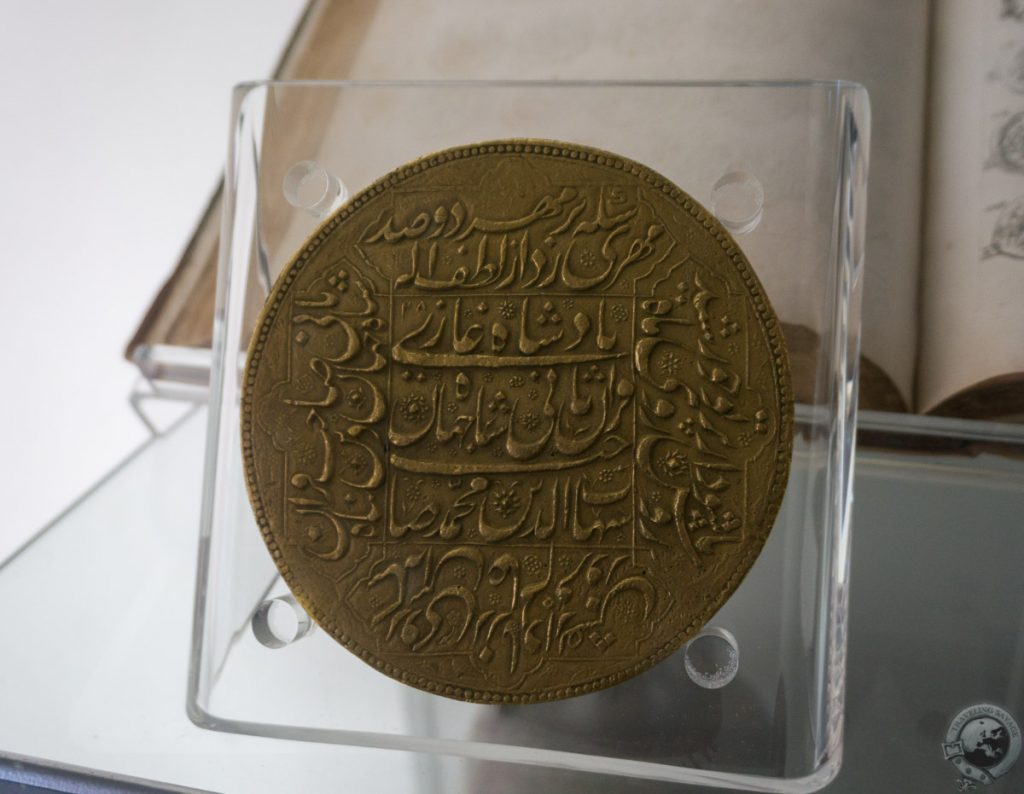
The Hunterian is a small museum by objective standards, but it could easily take up your morning if you’re studying even half the exhibits. If you’re in the mood for more cultural indulgence, head across University Avenue to the Hunterian Art Gallery and Mackintosh House. These installations, as well as the Zoology Museum and Anatomy Museum in other buildings, are technically all covered under the moniker The Hunterian. The Hunterian Art Gallery is small like its sister museum and filled with paintings from Rubens, Rembrandt, the Glasgow Boys, and James McNeill Whistler.
The Mackintosh House is the fully reassembled interior of Charles Rennie Mackintosh’s Glasgow home. As Glasgow’s most famous architect, you’ll find his work dotted across town and the Mackintosh House is a great place to learn more about his distinct style.
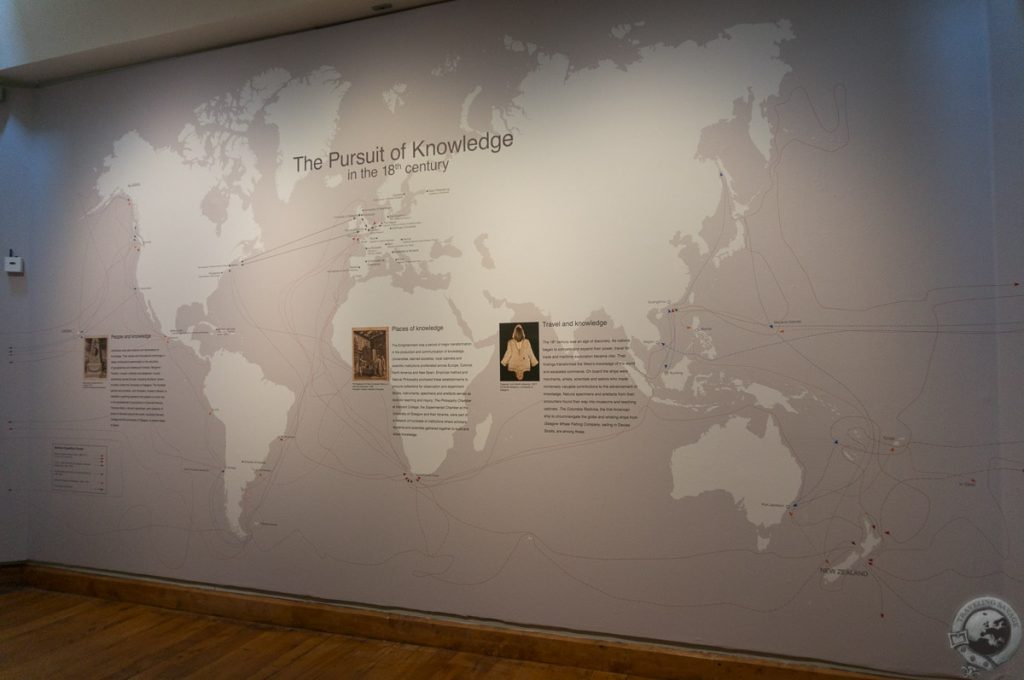
Spoiler: I’m not a huge fan of museums. Generally when I visit one I’m lucky if I can force myself to spend an hour inside, but The Hunterian is a beautiful little museum that is superbly curated and captured my attention and imagination. Its small size makes it approachable and served to catch my interest (whereas a visit to the Louvre had me seeking the nearest exits). I visited on a rainy Tuesday morning in early May and I must have been one of maybe a score of visitors.
With the Burrell Collection in Pollack Park closed for refurbishment until 2020, The Hunterian is my top recommendation for museum time in Glasgow. Kelvingrove is a close second, but that’s the subject of another post…
Art , History , Museums
Aelyth Savage
Article comments.
We were in Scotland close to 30 years ago, and we stumbled on a collection of books with wooden pages or covers, on display. We think they were either in a castle or museum, and because we are visiting Scotland in 2019, we’d love to find them again. Does this sound at all familiar to you?
Thanks so much Terri Paton
Hi Terri. Sorry, not ringing a bell!
Hi. We are planning a visit to Scotland in summer of 2023 and will only have one day in Glasgow before flying home. This museum is definitely on our “must see” list but we’d like to visit some other spots too, without rushing. About how much time would you say we should anticipate for visiting this museum plus the Mackintosh House? Your article says “a full morning” if we take our time, so… 2-4 hours? How long did your visit take you? Thanks in advance for your advice! This wee museum looks so fascinating!
I have few antique coins and I want to sell them in good price. I am contacting you if you are interested so I can share the details of them. [email protected] Thanks
Leave Me A Comment Cancel reply
Scotland's calling.
Subscribe and confirm your subscription to receive my posts via e-mail.
- Your Name *
- Email Address *
- Name This field is for validation purposes and should be left unchanged.
© 2024 Traveling Savage. All rights reserved. Privacy Policy - Terms of Use - Resources
🙌 Awesome, you're subscribed!
Thanks for subscribing! Look out for your first newsletter in your inbox soon!
Get us in your inbox
Sign up to our newsletter for the latest and greatest from your city and beyond
By entering your email address you agree to our Terms of Use and Privacy Policy and consent to receive emails from Time Out about news, events, offers and partner promotions.
Awesome, you're subscribed!
The best of London for free.
Sign up for our email to enjoy London without spending a thing (as well as some options when you’re feeling flush).
Déjà vu! We already have this email. Try another?
Love the mag?
Our newsletter hand-delivers the best bits to your inbox. Sign up to unlock our digital magazines and also receive the latest news, events, offers and partner promotions.
- Things to Do
- Food & Drink
- Coca-Cola Foodmarks
- Attractions
- Feeling Spontaneous?
- Los Angeles
The seven wonders of the Hunterian Museum
From a human-cockerel hybrid to a reusable condom made of sheep's guts, here are seven things to hunt at the Hunterian Museum
If you’ve already heard of the Hunterian Museum , you're probably into some weird shit. If you haven’t and are faint of heart, beware. This eclectic collection of all things pickled (onions excluded) is one of the oldest anatomical and zoological collections in the country. It's a constantly expanding compilation of artefacts that was initially curated by the surgeon John Hunter. Luckily for lunch–break explorers, the museum is both small and free. And if time is really tight, don’t miss these most remarkable specimens.
Read more about London's hidden museums and libraries or delve into quirky and unusual things to do .
RECOMMENDED: the seven wonders of London's museums and attractions
Been there, done that? Think again, my friend.
1. The Evelyn Tables, early 1640s

These displays, thought to be the oldest anatomical preparation in Europe, were acquired by the writer John Evelyn on a visit to Padua, Italy – presumably because his idea of a good souvenir was a bit dodgy. Individually showing the nerves, veins and arteries of the human body, the pine tables (obviously not matching the decor in Evelyn’s house) were initially donated to the Royal Society. They then changed hands many times before reaching their final resting place in the Royal College of Surgeons’ Hunterian Museum, where they have been for the past 200 years.
Find them in the museum entrance
2. Silver prosthetic nose mounted on spectacle frame, 1850s

Like something out of a Marx Brother's prop kit, this odd-looking piece of gear is a replacement nose from the mid-1800s, used by a woman who had lost her own to syphilis. Interestingly, the woman returned the prosthetic to her doctor when she remarried, claiming her new husband preferred her without it. Syphilis is a bacterial disease that can eat away at the nose and mouth in a similar way to leprosy, so you have to hand it to the husband: he knew how to make a girl feel good about herself.
Find it in the Upper Gallery
3. Sheep-gut condom, late eighteenth century

In the eighteenth century, condoms made from the intestines of sheep were all the rage as they were thought to prevent venereal disease. Surprisingly, a modern equivalent of them can still be bought online today, although they are now known not to defend against sexually transmitted diseases. Bummer. Still, at least someone was thinking about the environment: the eighteenth-century version of the product was advertised as suitable for washing and reusing!
Find it in the Crystal Gallery
4. Section of cockerel head with human tooth transplanted into the comb, 1760-93

On rainy days, some people play Scrabble, some watch TV and others build perfectly scaled-down replicas of ships to put in bottles. None of that for Dr Hunter. In moments of boredom he’d implant human teeth into cockerels’ combs. This section of the bird’s head seems to suggest his experiment was successful as the vascular tissue has grown into the pulp cavity of the tooth – although the point of the exercise remains unclear. It’s a bit like knitting a jumper with Chucky’s face on it: sure, it proves you have skill, but the result is still unsightly, comical and a bit disconcerting.
Head to the Crystal Gallery
5. Daniel Lambert by Ben Marshall, 1806

As well as artefacts, the Hunterian contains drawings and paintings collected for the purposes of scientific research. If Daniel Lambert were alive today, he’d be the kind of guy you see outside McDonald’s first thing in the morning, waiting for it to open and blaming his massive arse on a glandular disorder. At the age of 39, Lambert suddenly dropped dead. By then, he weighed a colossal 52 stone and it took 20 men to drag his coffin to his grave. Heavy stuff.
Find him in the Art Collection
6. Mummy’s foot (dissected), 1763

We’re talking the bandaged, embalmed, brain-removed-through-the-nose kind of mummy, not the bedtime-story-reading kind. This mutilated limb is testament to the ingenuity of the Ancient Egyptians. The foot has survived not only the test of time but also being interfered with by a surgeon morbidly fascinated by dead things in jars. It might not look like much, but up close it is truly impressive.
Hot foot it to the Crystal Gallery

7. Surinam toad, eighteenth century

The Surinam toad has the oddest reproductive habits – the likes of which cannot be seen anywhere else in the animal kingdom. When mating, the male and female perform backwards somersaults, during which the eggs are implanted in the back of the lady toad. After about three months, in an ‘Alien’-esque turn of events, the froglets hatch out of holes in her back, as depicted in the version displayed at the Hunterian. We’ve heard of children getting under your skin, but this is a horribly literal example.
Discover the best of London's museums
The wonders of london's museums.
- Things to do
- Cultural centres

London is packed with top attractions and museums, but once you've decided which cultural hotspot to explore, where do you start? By reading our guide to the seven essential things to see at some of London's best institutions.
[image] [title]
Discover Time Out original video
- Press office
- Investor relations
- Work for Time Out
- Editorial guidelines
- Privacy notice
- Do not sell my information
- Cookie policy
- Accessibility statement
- Terms of use
- Modern slavery statement
- Manage cookies
- Claim your listing
- Time Out Offers FAQ
- Advertising
- Time Out Market
Time Out products
- Time Out Offers
- Time Out Worldwide

A Visit To The Hunterian Museum

On Lincoln’s Inn Fields, in Holborn, is what has got to be one of London’s most unusual, at times slightly unsettling, but totally fascinating museums.
It is called the Hunterian Museum, part of the Royal College of Surgeons, and is filled with artefacts and specimens from the worlds of surgery, medicine and natural history.

The History Behind It
The museum is named after John Hunter (1728-1793), an eighteenth century surgeon and anatomist.

He was born in a place called Long Calderwood in Scotland, the youngest of ten siblings. His older brother William was an anatomist and from 1748 John helped him dissect bodies at his anatomy school in London.
John quickly became an expert, spent time as an army surgeon and then in 1764 set up his own anatomy school and private surgical practice.
In 1765 he bought a small country estate at the little village of Earl’s Court, to the West of London. Here he kept a menagerie of exotic animals, such as a jackal, buffalo, leopards and opossums.
In 1767 he became a fellow of the Royal Society and in 1776 he became the personal surgeon of King George III. He also taught and collaborated with Edward Jenner, the pioneer of the smallpox vaccine.
John collected voraciously throughout his life, amassing thousands of specimens, skeletons and artefacts. He ended up purchasing a large home on Leicester Square and subsequently put his specimens on display there as a teaching museum.
Dubious Methods
He is particularly credited with advancing understanding in many areas from gunshot wounds to inflammation to artificial insemination. However, his methods and ethics in many cases are very questionable by today’s and, in some cases, the period’s standards.
For example, he acquired thousands of bodies over the years from body-snatchers, people who would dig up dead bodies from graveyards to sell to anatomists and physicians. This was because the only bodies you could officially dissect for anatomical study in the 18th century were the bodies of executed murderers.
He also carried many experiments and dissections on live animals, sometimes strapped to a table.
Another example is that, in 1783, he nefariously acquired the body of Charles Byrne, an Irishman, who was 7ft 7inches tall.

Charles Byrne, born in 1761 in Ireland, moved to London and lived near Charing Cross, becoming a bit of celebrity for his height. It is thought today to have been due to having ‘acromegalic gigantism’, where the body produces too much growth hormone and he died in 1783, aged 22.
Before Charles’ burial, John bribed a member of the funeral party for the body and then filled the coffin with rocks. John studied and then displayed the body, against the express wishes of Charles himself before he died. The body was on display at the Hunterian until its recent reopening.
Setting Up The Hunterian
After john Hunter died, in 1799, the Government purchased his collection and gave it to the Royal College of Surgeons. This then formed the basis of the Hunterian Museum and they have been on display ever since.

The collection has been enhanced by other collections, such as that of Richard Owen, over the following years.
Sadly an incendiary bomb hit the building in May 1941 and destroyed two thirds of the museum’s collection. Of the original 14,000 specimens collected by John Hunter, the museum still has 3,000 remaining.
Visiting the museum you are immediately struck by the building itself.

The original 18th century building on the site was deemed not fit for purpose and it architect Charles Barry was therefore commissioned to redesign it in 1834. He kept the portico from the original building.

The museum underwent a huge, over £4 million, refurbishment and was shut from 2017-2023.
What To Look Out For
There are so many items in there, here are eight specimens/artefacts that stood out to me.
17th Century Anatomical Models

The Evelyn Tables

A Prosthetic Nose

A Baby Crocodile

Dental Phantoms

Child’s Orthopaedic Boot, Reputedly Belonging to Lord Byron

A Condom Made From Sheep’s Intestine

Winston Churchill”s Dentures

There is so much more to see at the Hunterian and I would highly recommend a visit.
How To Visit
The museum is free to visit (although pre-booking is recommended) and is open Tuesday-Saturday 10am-5pm.
Every Wednesday 2.15pm there is half an hour a curator’s tour, spots allocated on a first come first served basis.
Click here for more details!
Thank you for reading, more of London’s amazing museums below…

Ten Hidden Details At The Churchill War Rooms

A Visit To The Museum Of Homelessness

The Secrets And Stories Of The Natural History Museum

8 Places In London With Links To D-Day
Share this:, 3 thoughts on “a visit to the hunterian museum”.
In the US, we have the Mutter in Philadelphia.
I last visited this museum about 30 years ago and in particular, I remember the Irish giant, who was placed next to arguably the tiniest woman. In addition there were scores of glass jars containing assorted life forms and unexpected viscera. Not for the squeamish but definitely worth a visit.
As ever , nice photos.
This was the first museum I took my son to when we visited London in the summer of 2023. He had no interest in museums but I knew this one would hold his attention and I was right. We spend 3 hours there because was so fascinated by the exhibits and read everything. Definitely worth a visit.
Leave a Reply Cancel reply

Sign Up Today
Start your 14 day free trial today

History Hit Story of England: Making of a Nation
Hunterian Museum
London, England, United Kingdom
The Hunterian Museum in Lincoln’s Inn Fields is one of, if not the world’s finest medical museums and includes items from luminaries such as Jenner, Banks and Darwin.

Lily Johnson
02 jun 2021.

About Hunterian Museum
The Hunterian Museum in London is home to the lifework of John Hunter, perhaps the most renowned and distinguished anatomist surgeon of his day. Born in Scotland in 1728, he advocated scientific method and observation and was a teacher of Edward Jenner, the pioneer of the smallpox vaccine.
Hunter was also an avid collection of anatomical, zoological, and pathological specimens, and today his stunning collection is housed in the magnificent Royal College of Surgeons in Lincoln’s Inn Fields in London.
Hunterian Museum history
Over his lifetime, Hunter amassed a vast collection of specimens which was then purchased by the British government in 1799. They in turn gifted it to the Company (later the Royal College) of Surgeons, who incorporated into their new building in London.
The first museum, designed by George Dance the Younger and Nathaniel Lewis, was very quickly deemed not fit for purpose and in 1834 the Company commissioned Charles Barry ( Palace of Westminster , Highclere Castle , Trafalgar Square ) to redesign the whole building.
Barry kept the Ionic portico from the existing structure but most of the rest was completely redesigned. This initial phase of reconstruction was finished in 1837, but there have been subsequent additions in the 1850s, 1880s, and again in 1909. This early 20th century addition was due to the College being loaned the complete collection from the Odontological College of London, and a new gallery was built.
During World War Two , the building suffered terrible bomb damage and part of the Hunterian Collection was lost. A new, purpose-built museum was opened in 1963 and after a series of internal mergers in the late 1990s and early 2000s, the new Hunterian Museum opened in February 2005.
Hunterian Museum today
Visitors to the Hunterian can view one of, if not the world’s finest medical museum and as well as John Hunter’s life’s work, there are pieces donated from smallpox pioneer Edward Jenner and world-renowned botanist Sir Joseph Banks; carbolic sprays donated by antiseptic surgery pioneer Sir Joseph Lister; the tooth of a long-extinct giant sloth known as a megatherium, and Winston Churchill ’s false teeth!
You can also see plenty of traditional pickle jars full of all sorts of anatomical oddities, deformed skeletons, surgical instruments dating back centuries, paintings and sculptures, and the Evelyn tables, a set of four wood-mounted anatomical preparations acquired in Italy by English writer and diarist John Evelyn. They are widely considered to be the oldest in Europe.
One of the highlights is the skeleton of 7’7” (2.31m) Irish giant Charles Byrne. The story goes that he was so afraid doctors would dissect his corpse when he died that he asked a group of fishermen in Bristol to bury him at sea. When John Hunter heard about this, he bribed the fishermen to the tune of between £130 and £500 (conflicting reports put the figure at either end of this scale), a staggering amount of money in the 1780s which today would be roughly between £50,000 and £200,000.
Getting to the Hunterian Museum
The Huntarian Museum is located in Holborn in central London just off the A4200. The nearest Underground stations are Holborn and Chancery Lane, both under a 10-minute walk, while the nearest train station is City Thameslink, a 15-minute walk. A number of bus services run to the nearby area, with the nearest stop the Kingsway / Holborn Station stop, a 5-minute walk away.
Featured In

London Historic Sites
Londinium, The Big Smoke, The Great Wen: London has experienced its fair share of change over its 2000-year history. Here's our pick of some of the British capital's most famous historic sites to visit today.

Related Articles

6 Women Who Changed Their Lives By Concealing Their Gender

Eggs and Bunnies: The Origins of Easter and its Traditions
Watch and listen.

You May Also Like

The 10 Best Bronze Age Sites to Visit in the World

5 Historic Mazes to Explore in England

Explore the Key Sites of Henry VIII’s Life and Reign

5 of the Best Hillforts in England

10 British Churches Ruined During the Dissolution of the Monasteries

The Best English Civil War Sites and Battlefields

11 British Royal Residences

10 Must-See Medieval Landmarks in England

10 of the Best Norman Sites in Britain

10 Historic Sites Associated with Anne Boleyn

10 Key Crusader Ruins and Monuments

Viking Sites in Scotland: 5 Areas with Nordic History

10 Historic Sites You Should Not Miss in 2023

Historic Sites Associated with Mary Queen of Scots
This website uses cookies
We use cookies to analyse our traffic and improve our service.
Free entry - booking recommended
Tuesday to Saturday: 10am – 5pm
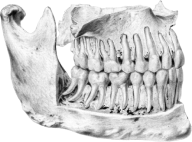
In this section

Prosthetic glass eyes, by glass-blower Mollie Surman, mid-1900s
Share this page
- Share on Facebook (opens in new tab)
- Share on Twitter (opens in new tab)
Video Library

Conserving Specimens

The Operation

BSL Hunterian Museum Tour

IMAGES
VIDEO
COMMENTS
The Hunterian is a member of the VisitScotland quality assurance scheme, the official grading system for tourism businesses in Scotland. We are delighted to be rated as a 4 star museum. The Hunterian is also a member of the Association of Scottish Visitor Attractions (ASVA) and Glasgow's Leading Attractions.
The Hunterian is Scotland's oldest museum. It opened in 1807 following Dr William Hunter's bequest of his substantial collections to the University of Glasgow. The first Hunterian Museum was located near Glasgow Cathedral on the University of Glasgow's first site. When the University moved to its present location in 1870, The Hunterian ...
Share this page. Opening Hours. Tuesday to Saturday: 10am-5pm. (recommended last entry 4 pm) Sunday: Closed. Monday: Closed. Admission Free. The Hunterian Museum is free to everyone. Pre-booking tickets is recommended to avoid having to queue at busy times.
The Hunterian is Scotland's oldest public museum and is home to one of the largest collections outside of the National Museums. Founded in 1807, The Hunterian is one of the leading university museums in the UK and is one of Scotland's most important cultural assets. Built on Dr William Hunter's founding bequest, The Hunterian collections ...
The Hunterian Museum is free to everyone. Pre-booking tickets is recommended to avoid having to queue at busy times. For groups of 10 or more, please see the group visit page for more information. Select your day and time via Eventbrite. 2024.
Explore the displays and discover exhibition highlights with the Hunterian Museum's free digital guide. Use the guide to plan your visit, then easily access highlight objects and background information when at the Museum. Afterward, dive deeper into your favourite displays at home-or anywhere, anytime!
The museum is situated near the west end of the 84-acre Kelvingrove Park. Entry is free. Glasgow Botanic Gardens. 730 Great Western Rd, Glasgow G12 0UE. 12-minute walk. This is a 27-acre botanic garden in the heart of Glasgow. The gardens are acclaimed for the Victorian cast-iron glasshouse, Kibble Palace. Entry is free.
Follow local signage at University. Underground station, Hillhead. Buses, Nos. 44, 44A, from the city centre to University Avenue. Telephone 0141 330 4221. Atlas Obscura Trips.
Hunterian Museum. Housed in the glorious sandstone university building, which is in itself reason enough to pay a visit, this quirky museum contains the collection of renowned one-time student William Hunter (1718-83). Hunter was primarily an anatomist and physician, but as one of those wonderfully well-rounded Enlightenment figures, he ...
2526. The Hunterian Museum has an amazing anatomy and pathology collection amassed by John Hunter; an anatomist, obstetrician, doctor, naturalist, and dedicated collector of oddities who lived ...
Explore, learn and research with our collections. Experience exhibitions and events across The Hunterian. We look to play our part in furthering equity, justice and diversity in our society. Unearth the stories from our collections. News, blogs, podcasts and more!
Visit Hunterian Museum. Break up your exploration of Hunterian collections with a visit to the Hunterian Museum. The museum houses an impressive collection of historic items, including from Captain Cook's Pacific voyages and Ancient Egypt! Check out James Watt and Lord Kelvin's scientific instruments and how Roman doctor Antonine Wall ...
The Hunterian Museum is named after the Scottish physician William Hunter and housed in the University of Glasgow's main quadrangle, a beautiful neo-Gothic building designed by Sir George Gilbert Scott, in the city's glorious West End. The museum opened in 1807, so, like it says on the tin, this is the oldest museum in Glasgow, which I ...
Access & facilities. The Royal College of Surgeons of England strives to reduce any barriers to coming and enjoying a visit to the Hunterian Museum and associated events. Feedback and suggestions on ways to improve are welcome from all visitors. Additional information is available on the Royal College of Surgeons of England AccessAble Access Guide.
Check out our pick of London's Hunterian Museum, from a human-cockeral hybrid to a reusable condom made of sheep's guts - here are seven things to hunt down on your next visit
The History Behind It. The museum is named after John Hunter (1728-1793), an eighteenth century surgeon and anatomist. John Hunter, painted by John Jackson in 1813, based on an original by Sir Joshua Reynolds. He was born in a place called Long Calderwood in Scotland, the youngest of ten siblings. His older brother William was an anatomist and ...
The Hunterian Museum in London is home to the lifework of John Hunter, perhaps the most renowned and distinguished anatomist surgeon of his day. Born in Scotland in 1728, he advocated scientific method and observation and was a teacher of Edward Jenner, the pioneer of the smallpox vaccine. Hunter was also an avid collection of anatomical ...
On May 18, 1813, the Hunterian Museum opened its doors as one of the first medical collections in the United Kingdom. 200 years later this month, the Hunterian commemorates its glorious bicentenary.
Described as a 'Post Mortem Palace' by Charles Dickens in 1850, the Hunterian Museum at the Royal College of Surgeons over the last two hundred years has boasted renowned collections of human anatomy and pathology as well as natural history and works of art.
ISO Design for the Hunterian Museum at the Royal College of Surgeons of England. Discover the art and science of surgery from ancient times to the present day. Including the extraordinary specimen collection of the 18th century surgeon anatomist John Hunter. Free entry - booking recommended. Tuesday to Saturday: 10am - 5pm.
What are the museum's opening hours? In the summer period (from May 15 to September 30) the Moscow Kremlin Museums are open from 10.00 to 18.00, in the winter period - from 10.00 to 17.00. The Armoury Chamber is open to the public from 10.00 to 18.00 according to timed admission system. Day off - Thursday.
The Hunterian Museum, named after the 18th century surgeon and anatomist John Hunter (1728-1793), reopened at the Royal College of Surgeons of England's headquarters at Lincoln's Inn Fields in central London in May 2023. Exhibition. From 16th May 2023. Hunterian Museum. Royal College of Surgeons of England.
BSL Hunterian Museum Tour. Hunterian Museum. Royal College of Surgeons of England. 38-43 Lincolns Inn Fields. London. WC2A 3PE. [email protected]. Royal College of Surgeons of England. Join the conversation.